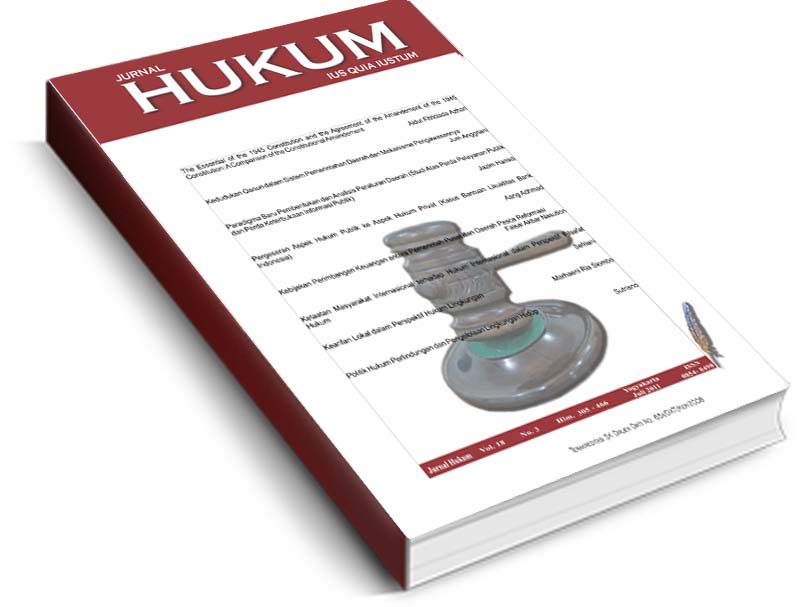Main Article Content
Abstract
In the post-reform, the establishment of the Law No. 25 year 1999 about the Financial Proportionality between Central Government and Local Government and the Law No. 33 year 2004 about the Financial Proportionality between Central Government and Local Government, Distribution of Proportionality Resources have turned into the distribution of natural resources of local areas. The issue to be analyzed deals with in what financial sector the local areas initiatively find the revenue sources needed to implement their autonomy as a reflection of a decentralization-based implementation as stated in Constitutional of 1945. The method used in the research is based on the judicial-normative approach by applying the materials of primary law, secondary law, and tertiary law. This research additionally applies a normative-qualitative analysis. The establishment of Regulation on the Financial Proportionality in the post of reform shows a very significant outcome for the implementation of autonomy in the local areas. It is due to the local budget is not merely based on the local revenue but, much more than that, the local areas also have the budget resources originated from the local areas alone – that currently is absorbed by the Central Government.
Keywords
Article Details
Authors who publish with this journal agree to the following terms:
a. Authors retain copyright and grant the journal right of first publication with the work simultaneously licensed under a Creative Commons Attribution License that allows others to share the work with an acknowledgement of the work's authorship and initial publication in this journal.
b. Authors are able to enter into separate, additional contractual arrangements for the non-exclusive distribution of the journal's published version of the work (e.g., post it to an institutional repository or publish it in a book), with an acknowledgement of its initial publication in this journal.




